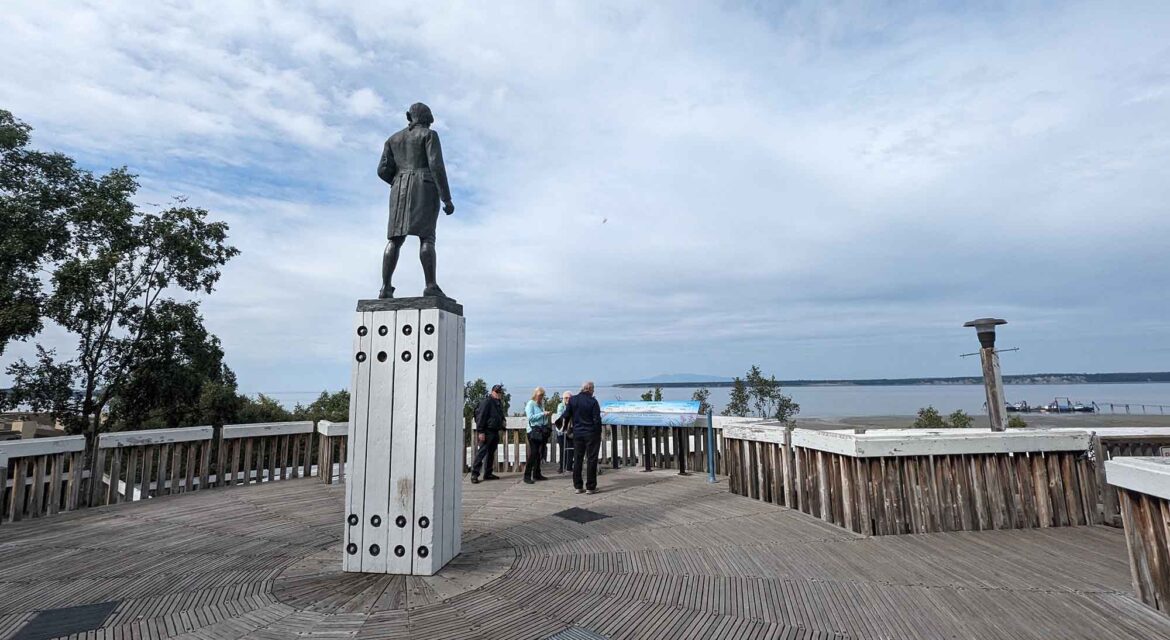 Located just outside of downtown Anchorage, Alaska, the Captain Cook Monument is a life-size bronze statue of the navigator whose exploration of the area helped form a better understanding of the region in the 18th century. The identity that it has provided the surrounding park is connect to a larger legacy for Anchorage that continues to evolve and impact the modern community.
Located just outside of downtown Anchorage, Alaska, the Captain Cook Monument is a life-size bronze statue of the navigator whose exploration of the area helped form a better understanding of the region in the 18th century. The identity that it has provided the surrounding park is connect to a larger legacy for Anchorage that continues to evolve and impact the modern community.

A Search for the Northwest Passage Charts the Cook Inlet
 During a 1778 expedition to find the Northwest Passage aboard the HMS Resolution, James Cook sailed what would eventually be named the Cook Inlet. Although Cook himself never made it to the area that would become Anchorage, he sent his ship’s master to chart and detail the land. These charts were used by ships across the world until the 20th century. His voyage gave the name to the inlet stretches from the Gulf of Alaska to Anchorage, while the ship’s name defined the small park on the edge of downtown Anchorage.
During a 1778 expedition to find the Northwest Passage aboard the HMS Resolution, James Cook sailed what would eventually be named the Cook Inlet. Although Cook himself never made it to the area that would become Anchorage, he sent his ship’s master to chart and detail the land. These charts were used by ships across the world until the 20th century. His voyage gave the name to the inlet stretches from the Gulf of Alaska to Anchorage, while the ship’s name defined the small park on the edge of downtown Anchorage.
In 1976, a statue of James Cook created by Derek Freeborn was installed in Resolution Park. It is modeled after the statue in Whitby, where James Cook began his career as a seaman. A plaque on the statue refers to Cook as a navigator, explorer, chartmaker, scientist and humanist and has further details about his life. This piece literally anchors an observation deck that provides a view surrounding mountains and is a similar one to what Cook and his crew would have experienced.
Featured in maps and guides to the city, the natural settings as well as the legacy that Cook and his voyages represent to the past and present of the community provide Resolution Park with an identity that resonates differently to residents and visitors. It’s an identity that is set to further attract interest and attention from across the region and beyond.

Evolution of an Identity
 Recent years have seen some push to see the Captain Cook Monument relocated or removed, hinting at the power that it has to define the identity of the park and wider downtown area of Anchorage. Engagements with the public will see how this identity changes or is developed in a different way, highlighting the power monuments have to spur engagement and connection that affects the hearts and minds of audiences from across a region and beyond.
Recent years have seen some push to see the Captain Cook Monument relocated or removed, hinting at the power that it has to define the identity of the park and wider downtown area of Anchorage. Engagements with the public will see how this identity changes or is developed in a different way, highlighting the power monuments have to spur engagement and connection that affects the hearts and minds of audiences from across a region and beyond.

